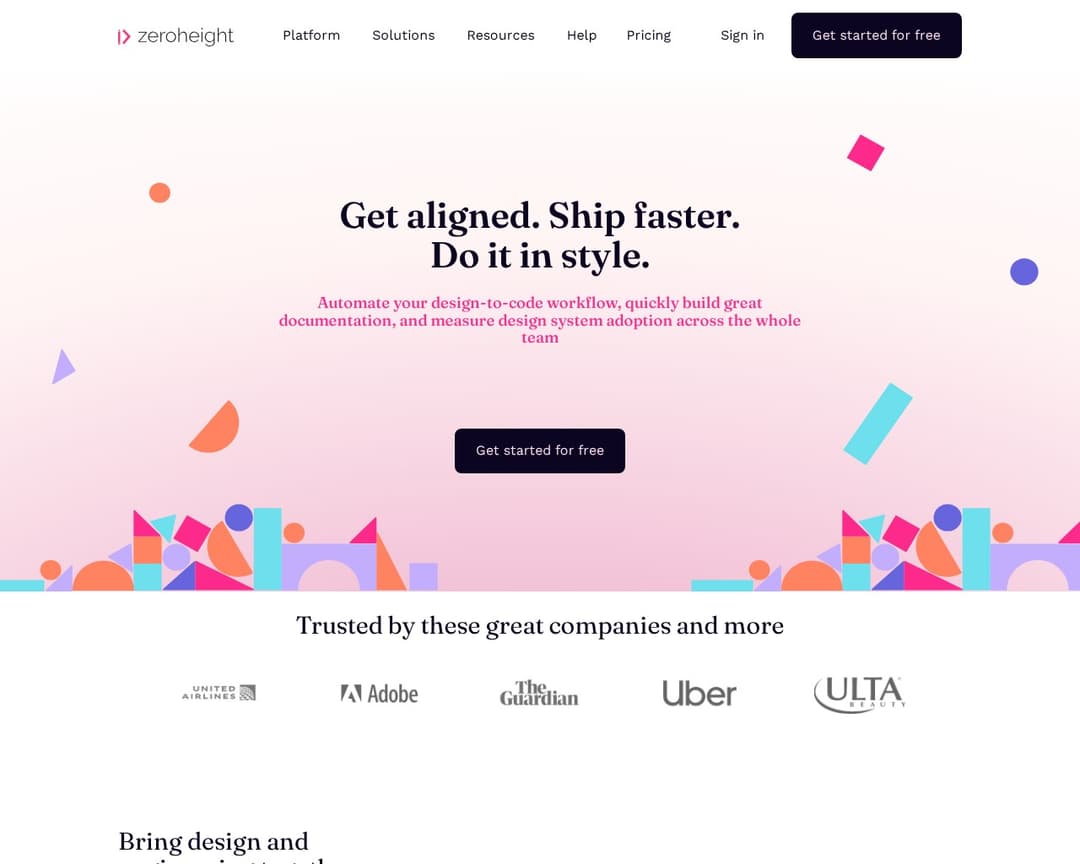Competitors
12
🚀
Discover 50+ More Competitors
This is just the tip of the iceberg. Unlock comprehensive insights into your competitive landscape.
Unlock Full ReportZeroheight is a design system management platform that helps teams centralize design assets, documentation, and code. It offers tools for building, managing, and sharing design systems, integrating with various design and development tools to streamline workflows and ensure consistency across products.
5 of 5
Centralized Asset Storage
Brand Guideline Editor
Shareable Brand Guide URL
Version Control & Updates
Asset Organization & Search
9 of 13
Logo Variant Upload
Color Palette Definition
Typography Settings
Customizable Sections
Preview Mode
Google & Custom Fonts
Real-time Collaboration
Automated Notifications
Integration with Design & Dev Workflows
Asset Generation Tools
Browser Extension Access
AI Consistency Checker
Whitelabel Agency Mode
Zeroheight is a strong match for the ybrand concept. It explicitly positions itself as a platform for building and managing design systems, which directly aligns with brand guideline and asset management. The website content clearly indicates features such as centralized storage for design assets (logos, components), an editor for creating documentation (brand guidelines), version control for releases, and the ability to share these systems. It also mentions integrations with design and development tools, custom fonts, colors, and collaboration features. While it focuses more on 'design systems' rather than strictly 'brand guidelines,' the functionalities overlap significantly.

I've been using Alternative A for 6 months now and it's been fantastic. The pricing is much better and the features are actually more robust than what [Product] offers.
It handles edge cases much better and the API is actually documented properly.
Check it out at our site.
Honestly, after trying both, Competitor B wins hands down. Better customer support, cleaner interface, and they don't nickel and dime you for every feature.